WORLD CLASS COACHING
4-2-3-1 Defending
By Luca Bertolini
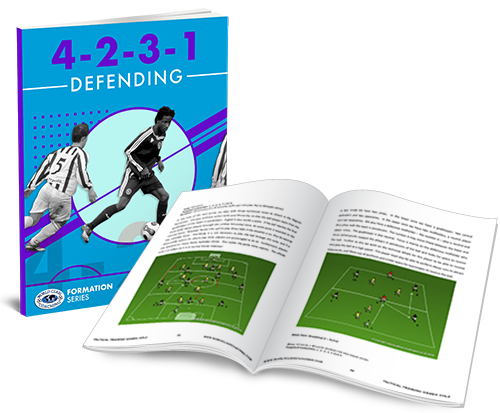
Table of Contents
PART THREE
Juventus 2016-2017 case analysis: the art of the 1-4-2-3-1 defense phase - Part 1
Juventus 2016-2017 case analysis: the art of the 1-4-2-3-1 defense phase - Part 1
The turning point of the 2016-2017 season for Juventus was the introduction of the 1-4-2-3-1 system of play that allowed lining up all the attacking power of the squad and to find the best defending solutions, high pressure with balance, compactness and restrain at the back.
Juventus get close to win the treble that season, being champions of Italian Serie A and Italian National Cup and runner up of the Champions League final against Real Madrid, losing 4 – 1, but only in the second half.
This was the starting eleven of the match against Lazio, when Juventus was shaped with this system of play for the first time in the season.
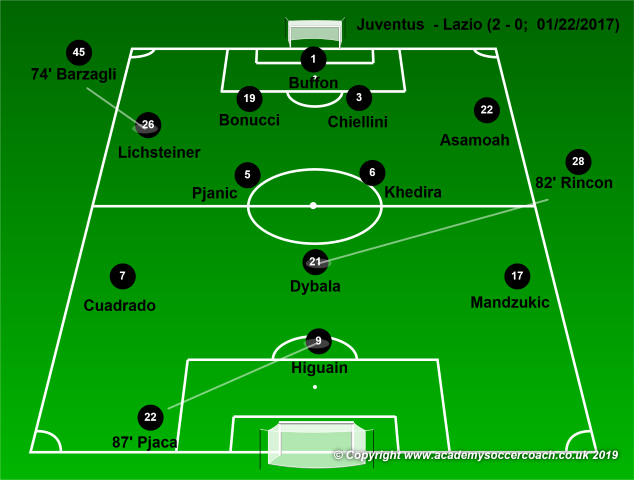
Four at the back in front of Buffon, Pjanic and Khedira as center holding midfielders (and play makers when the team was in possession), Cuadrado and Mandzukic as wingers inside and outside the half spaces, Dybala as second forward behind the only striker, Higuain.
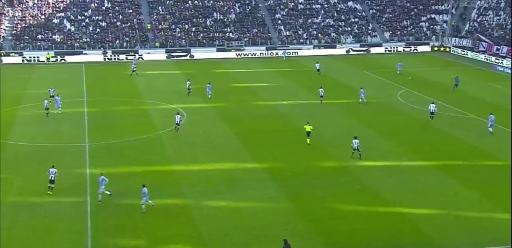
The main principle of play without possession was to ask Dyabala and Higuain to put high oriented pressure against the opposition low possession phase; in this first example the possession was forced toward the left, where Juventus had numerical equality (Lichesteiner would had been involved in a 2 v 1 on the right, in case of an opposition switch of side).
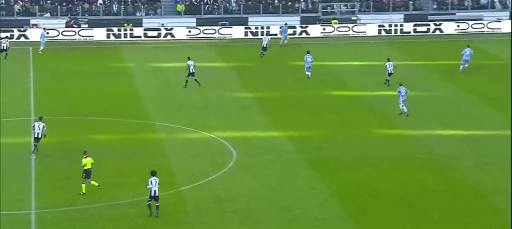
The opposition player who received wide was then forced backward by Mandzukic; Dybala was ready to press the nearest passing options and Khedira provided balance at the back of the ball area, as well as Pjanic and Cuadrado shifted across the center to cover the space in case of switches of side attempts. Asamoah marked 1 v 1 Lazio’s right winger in case of long pass down the flank.
In this second example Higuain and Dybala forced the opposition building up phase toward the defending right side thanks to their body positioning against the right center back and the holding midfielders.
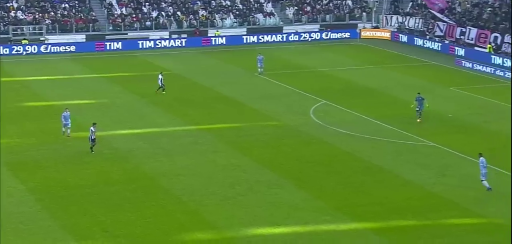
Higuain was ready to press the center back and Dybala was positioned in front go the holding midfielders, both turned toward the defending right side of the final third; for this reason the goalkeeper was forced to pass the ball to the left center back, the only one who could receive being unmarked.
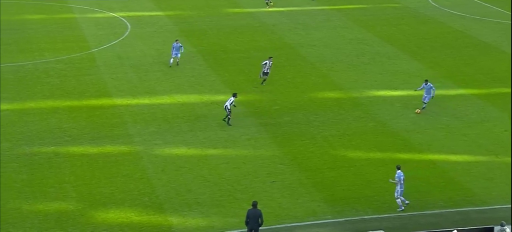
Lazio played out on the left flank and Dybala, together with Cuadrado forced the opposition ball carrier to play even wider, screening the only passing option toward the center. The left fullback received free but with few options to play forward efficiently to progress the move.
The pressure phase was not considered a tool to win the ball back high against the opposition building up from the back, but to force the opposition possession toward a specific wide area, where then Juventus pressed with more rhythm.
The main goals were not to concede center passing options in between the lines and then counter attack in case of ball recovery while the opponents were pushing up the field, making their transition to defend phase more complicated.
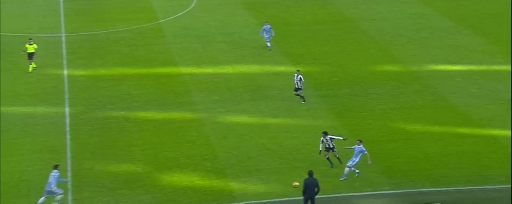
Lazio left fullback passed along the flank, but his teammate was turned backward in relation to the final third and he was closed by Lichsteiner and potentially double teamed by Cuadrado, without any chance to play forward.
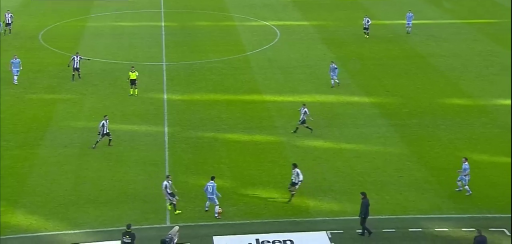
As we already analyzed, even in this situation, Pjanic and Khedira provided balance and coverage of the center spaces, Dybala and Higuain were screening the passing options toward the center, preventing a potential switch of side.
Looking at the names of the starting eleven, we may think that it was an attacking minded 1-4-2-3-1; instead, it was a defending system to allow lining up all the attacking power that Juventus could show that season.
If we compare that formation with Mourinho’s Internazionale Milan treble winner (2009 – 2010), we can find a lot of similarities:
1. High and aggressive pressure only if the ball was lost in the final third
2. Pressure to force the opposition possession, rather than to win the ball back quickly
3. Aggressive pressure after possession direction forced wide in the middle third
4. Back four blocked at the back if the possession was lost in the middle third (A little difference can be found about the fullbacks: Internazionale Milan had one more attacking minded fullback on the right, Maicon, rather on the left. On the other side Juventus was more flexible with Asamoah and Alex Sandro on the left and Daniel Alves on the right)
5. Two narrow lines of 4 at the back when the first third had to be defended.
6. Two holding midfielders in front of the defense line, one more defensive oriented (Khedira as Cambiasso) and the second one more “possession oriented” (Pjanic alike Thiago Motta).
7. No.10 free to play all over the final third and as a play maker as well
8. Wingers as fullback during phases without the ball (Mandzukic and Eto’o were alike along the left flank).
9. Center striker as the first option to finish the moves: Higuain had a great season like Milito for Inter who scored 35 times in 47 played matches in 2009/2010 season. Higuain scored 32 times in 55 played matches that season (having also important tasks in non-possession and building up phases), the second best one after the record Serie A 2015/2016 season as Napoli striker with 38 goals in 42 played matches).
The final third was saved shaping two narrow lines of four players, thanks to the classic back runs of the right and left wingers and overloading the ball area.
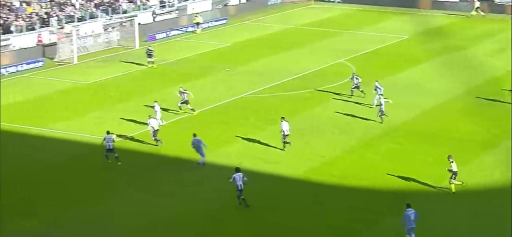
A 3 v 1 duel was created against the opposition ball carrier at the corner of the 18 y box to force him wide and away from the goal space in this sequence. Chiellini closed the space toward the goal, Bonucci double teamed him and Lichsteiner tripled the mark on him to prevent any shooting attempt.
Cuadrado was retreating the position to shape the second defense line of four and to create numerical advantage around the ball (3 v 2)
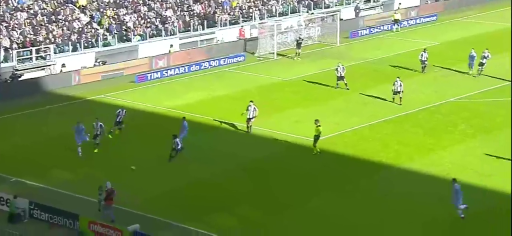
Lazio’s forward was able to keep the possession and to pass backward; anyway the possession phase had been sent away from the goal
A 4 v 1 duel saved the center space of the 18 y box in front of the goalkeeper.
The opposition possession was sent backward, but the numerical advantage on the ball was maintained.
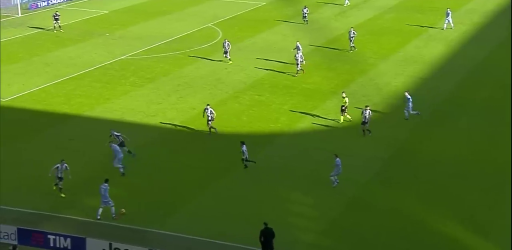
A 4 v 2 duel was shaped near the ball carrier, with one pressing player (Lichsteiner), the right center back track the nearest opposition run off the ball and right winger and holding midfielder closed the passing lane toward the center of the field. The only possible and safe pass was to play backward again.
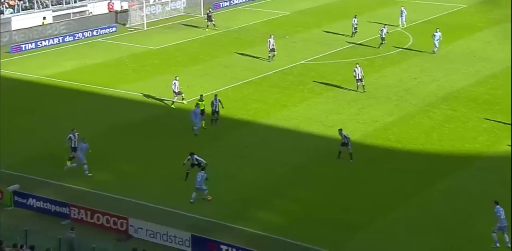
The ball carrier attempted to dribble inside but the space was closed by the right winger Cuadrado and, again, all the center passing options were closed and screened by the second forward Dybala and the defense was protected by the center holding midfielder.
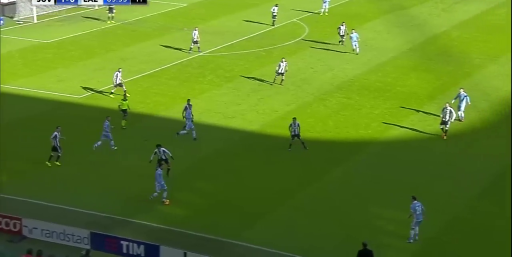
The ball carrier was then forced to pass backward to the left fullback, who was forced to play quickly because of the pressure of Cuadrado.
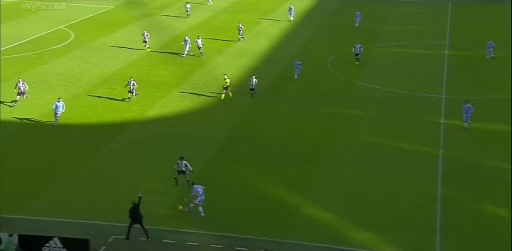
In this sequence, Cuadrado pushed up to press and Mandzukic dropped back to act as third midfielder, shaping a momentary 1-4-3-3 formation with very narrow lines.
Every opponent was double teamed or potentially under the pressure of two Juventus players:
1. Bonucci and Khedira pressed the nearest passing option in front of the ball carrier
2. Chiellini and Pjanic pressed the center forward
3. Dybala screened the center holding midfielder and Higuain could have double team him
4. Asamoah and Mandzukic covered the opposite side.
Juventus was spread out through the width of the field to mark the opponents and to cover the space around them; no strong or weak sides were created, but marking the opponents was the first idea. The defending strong side was usually created in case of chances to close the opponents down the wings, but never during open ball situations like this one.
The momentary 1-4-3-3 was created by Cuadrado, who pushed up to press the ball carrier and by Mandzukic, who shifted across the center to get narrow to the holding midfielders, but the basic idea was always to defend the first third with the 1-4-4-2.
As a matter of fact, as the ball was played in the center just few seconds after, the line of four in front of the back line was immediately restored, creating a 4 + 1 v 3 situation, as Dybala dropped deeper to help the midfield line
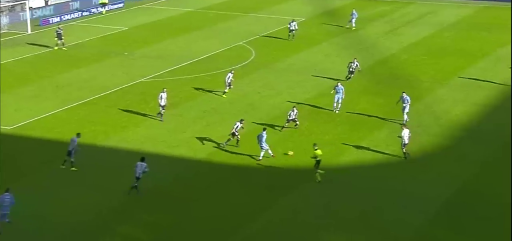
The back four were protecting the box through zonal defense, with the fullbacks (Lichsteiner on the right and Asamoah on the left) who were positioned diagonally in relation with the wider opponents.
The middle line was very narrow and the center holding midfielders (Khedira and Pjanic) were closing the space against the ball carrier to prevent him from passing or dribbling in behind and forcing him to play backward.
Cuadrado was shifting across the center, as well as Mandzukic on the left, who was ready to push up to close the space and press the back receiver, to prevent him from dribbling up the field.
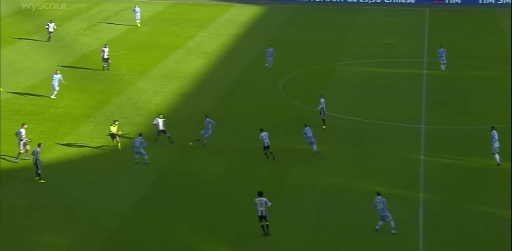
The 9 v 5 defense numerical advantage of the prior situation forced Lazio to play backward again to save the possession and Juventus pushed up, breaking the lines to press again near the ball area.
But as the ball was played in the final third again, two four defending lines were shaped again.
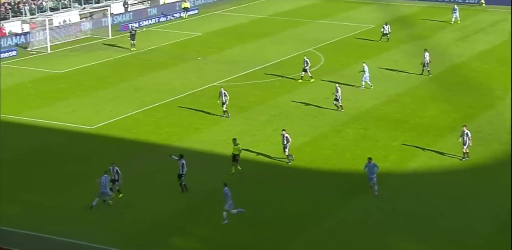
Lichesteiner was involved in a 1 v 1 duel against the ball carrier, Cuadrado and Khedira were ready to save the depth behind the teammate and all the other Juventus player were protecting the 18 y box through zonal defending. A huge numerical advantage in the first third was ensured, as in the previous situation.
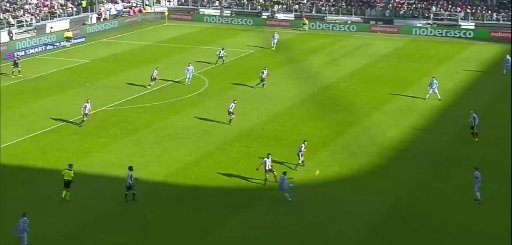
Despite this, Lazio was able to switch the side, but positioning of Juventus defending lines throughout the first third that did not created real strong and weak sides allowed a quick overload of the left flank first and of the left flank.
Juventus faced this switch of side with a 2 v 2 duel along the 18 y box border line (Chiellini against the center forward and Asamoah against the right wingback) at the beginning and two Lazio’s players were free to receive, as Khedira was pressing the ball carrier together with Dybala and Pjanic and Mandzukic were too far from the opponents on the center right, being very close to the center back and the fullback.
Juventus defense tactical idea took the players to read this pass as a possible chance to finish the move for Lazio.
As just stated, as neither a strong side nor weak sides were usually created against opposition distribution, the switch of side were covered quickly, preventing Lazio from exploit the attacking right flank.
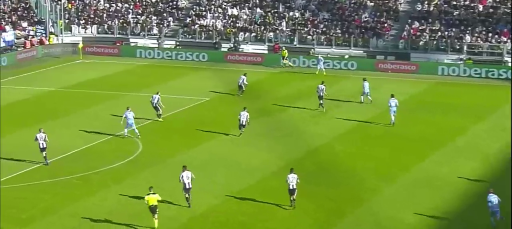
The defense line shifted wider toward the defending left side, as well as the midfield line; Mandzukic was positioned as left winger and Asamoah moved toward the wider opponent on the sideline.
The left center back Chiellini turned to position his body toward the left and to shadow the passing path toward the center forward, as well as the right center back Bonucci moved back to be ready to counter him inside the box.
Pjanic moved fast toward the ball area and Khedira was running back to balance the center space in the first third that was opened by Pjanic.
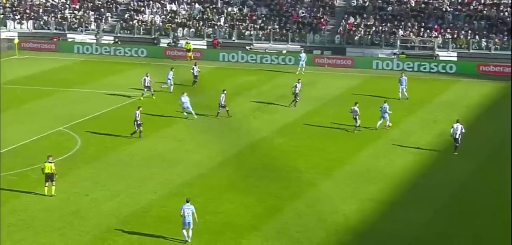
A 6 v 5 numerical advantage was now created to prevent Lazio from finishing the attacking move. Juventus adapted the defending shape and actions as follow:
1. A 2 v 1 duel against the most advanced opponent (Chiellini and Asamoah)
2. Pressure against the ball carrier to force him sideways (Dybala)
3. Mandzukic was ready to counter the easiest passing option on the right
4. Pjanic was screening any further passing option in behind toward the center forward, who tried to attack the defense at the back, taking advantage of the momentary non-aligned Juventus defense.
A potential attacking phase for the opposition was limited to another distribution situation of the possession phase.


